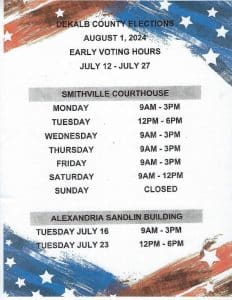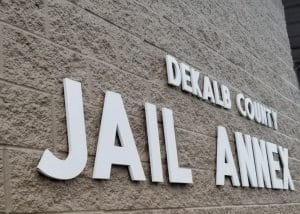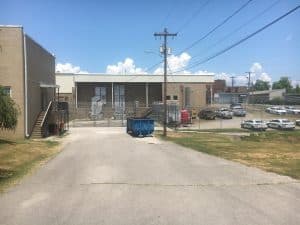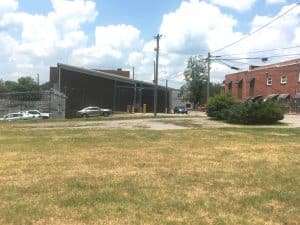News
To Date 190 Vote Early for August Elections
July 16, 2024
By: Dwayne Page
A total of 190 people cast ballots during the first four days of early voting for the August 1 elections.
On Tuesday July 16 the election commission reports that in Smithville at the courthouse 34 voted including 28 in the Tennessee Republican Primary and 6 in the state Democratic Primary while in Alexandria at the fairgrounds 33 cast ballots including 23 in the state Republican Primary and 4 in the Democratic Primary. Six people voted only in the DeKalb County General Election without participating in either of the state primaries.
Early voting is underway through July 27.
Early voters may cast ballots at the courthouse in Smithville during a six-hour period on Mondays, Wednesdays, Thursdays, and Fridays from 9 a.m. until 3 p.m. and Tuesdays from 12 noon until 6 p.m. Early voting on Saturdays will be from 9 a.m. until 12 noon. No early voting on Sundays.
In Alexandria, early voting will take place on two dates, Tuesday July 16 from 9 a.m. until 3 p.m. and on Tuesday, July 23 from 12 noon until 6 p.m. at the Kenneth Sandlin Center on the DeKalb County Fairgrounds.
Meanwhile, the election commission has released the sample ballot for the elections on Thursday, August 1 which will include the DeKalb County General Election, Municipal Elections in Smithville, Dowelltown, and Alexandria, and the Tennessee Republican and Democratic Primaries.
Sample Ballot
The deadline to update an address on voter registrations is Friday, July 26.
County opened Jail Annex in 2001 with intentions for future two phase expansion at existing site
July 13, 2024
By: Dwayne Page
Could the county renovate/expand the jail or build a new one on the existing site that would meet state certification standards?
Twenty-three years ago when construction of the DeKalb County Jail Annex (primarily a dormitory style facility for 32 inmates and double occupancy housing for 6 prisoners) was completed in the summer of 2001 county officials at the time already had intentions for a future Phase 2 & 3 expansion there when needed. Under that concept, Phase 2 would expand the jail on the south side with 44 additional beds followed by a later addition of up to 76 beds in a phase 3 project on the east side of the jail. But some now argue that the existing jail annex as well as any expansion plans proposed by the county almost two and a half decades ago are outdated, not sufficient in meeting today’s jail necessities, and did not take into consideration space and security issues at the courthouse which should be addressed now.
Due to longstanding structural deficiencies, the Tennessee Corrections Institute in August 2023, the state entity that certifies jails, reduced the certifiable bed count at the DeKalb County Jail from 102 (78 males and 24 females) to no more than 52 (16 females and 36 males) and with it came the decision that the basement portion of the older jail facility which housed inmates, could no longer be used for that purpose. Since then, Sheriff Patrick Ray has been sending as many inmates as possible, particularly females, to other places for housing but the costs to DeKalb County for that has reached approximately $100,000 and continues to grow.
Last month, the county commission raised the property tax rate by 51 cents for debt service and adopted a bond resolution to borrow up to $65 million to build a new jail/judicial center with 190 inmate beds (location not yet identified) but those (bond issuance) plans may now be on hold due to a petition signed by 2,500 which is expected force a referendum on the issue in the November election. The referendum would not apply to the property tax increase. Petition signatures of at least 10% of DeKalb County registered voters (1,361) must be checked and confirmed as valid by the election commission to trigger such a referendum.
Although the county commission’s aim in 1999 was to primarily relieve inmate overcrowding with a new dormitory style facility, the state now apparently prefers that counties move away from the dorm concept and build jails to better classify inmates for housing based on their level of risk and needs while meeting standards pertaining to square footage space per prisoner, ceiling height, and natural light standards within a facility, etc.
In January, Jim Hart, Jail Consultant and Field Manager of the County Technical Assistance Service (CTAS) addressed those issues with the present county commission.
“An accepted figure is that your jail is crowded when your average daily population exceeds 85% of capacity. If you have a 100-bed jail and it routinely exceeds 85 inmates, you are overcrowded and that has an impact on your ability to classify and separate offenders by their risk and needs and to address when you have surges in the inmate population due to weekend offenders, major roundups, or a backlog in court. You have been trending just above your rating capacity for males and females,” said Hart.
Unlike when the DeKalb Jail Annex was built in 2001, Hart explained that dormitory type facilities like the annex, pose more concerns today.
“Twenty years ago, a lot of dormitory space in jails were built for housing low risk misdemeanor offenders. Today we have a high number of pre-trial felons in custody and more violent offenders as well as individuals with mental illnesses and substance use disorders. We see a whole different dynamic of inmate populations today so open bay dormitory style housing becomes very problematic today,” said Hart.
“Now for every inmate who comes into custody, we should be doing a formal classification assessment which identifies specific risk and needs of that individual offender such as whether he or she is an escape risk, violent person, sexual predator, or a danger or threat to our facility”.
“An inmate’s needs must also be considered such as their mental health, whether they are elderly, in advanced stages of pregnancy, or other reasons that they can’t be in the general population. We try to house them according to their risks and needs to ensure the safety and security of everyone,” said Hart.
Hart also recommended that the number of staff for the jail operation (correctional officers, etc.) be increased from the current level of 17 to as many as 58 once a new facility is constructed and operational.
In 2024, the DeKalb County Sheriff’s Department and Jail Staff combined now totals 55 employees as follows:
*Sheriff’s Department (33 employees)- Sheriff 1. Chief Deputy 1, Captain 1, Detectives 4, Patrol Sergeants 2, Patrol Corporals 2, Court Corporal 1, Court Officers 3, Deputies 11, School Resource Officers 6 (one paid by school and 5 paid by state grant), and a Reserve Officer 1 (not paid, volunteer)
*Jail Staff (19 employees)- Jail Sergeant 1, Jail Corporals 4, Corrections 12, State Litter Grant Guard 1. County Litter Guard 1
*Secretaries (3 employees)- Sheriff’s Secretary 1, Warrants Clerk 1, Inmate Records Clerk 1
What was the mindset of the county commission, county mayor, and sheriff 25 years ago when discussions began at that time about expanding the jail?
County commission minutes dating back to the spring of 1999 tell the story of how the existing jail annex (completed in 2001) eventually came about to address needs at that time with plans for future expansion. There was even consideration about DeKalb County joining other Upper Cumberland Counties in developing a regional jail, but that concept never materialized.
According to the county commission minutes in March 1999, then Sheriff Kenneth Pack reported to the county commission on overcrowded conditions at the jail. At that time, the county only had the portion of the jail which was built in 1959. Based on his report, the county law enforcement committee recommended that South Build Services do a preliminary study of the jail situation. The cost was $4,000 for the study. The county commission approved the recommendation.
A month later (April 28, 1999) Jim Langford of South Build provided a detailed report to the county commission as follows:
1. Projections were estimated based upon growth levels during the last 20 years:
*In 1984 there were approximately 14 inmates, 1989-20 inmates, 1994-35 inmates and in 1999-50 plus inmates. These are averages. The recent peak (1999) is 72. Up to 80 inmates are projected for 2004-2009. This breaks down to approximately 14 state prisoners, 10 pre-trial, 6 convicted misdemeanors, and 14 weekenders.
2. The jail staff has 1 Administrative Assistant, 5 Jailers, 1 Chief Deputy, and the Sheriff (50%)
3. The Patrol staff with the Sheriff (50%), 10 Deputies, and 5 Dispatchers.
4. Various concepts were considered in locating the facility expansion to the south and/ or to the east. It was determined that an expansion to the east for the first phase was the most economical while providing for the opportunity for future growth based on purchase of additional property.
FLOOR PLAN/SITE PLAN
1. Phase One (jail annex) will be comprised of approximately 4,750 square feet of new building with a simple construction cost of approximately $712,500 or $150 per square foot with an accuracy level plus or minus 5% at this time. The simple construction cost does not include fees, furnishings, or unusual cost such as site utilities.
2. A future phase is estimated to be approximately 23,000 square feet with a simple construction cost of approximately $4,025,000 or $175 per square foot depending upon exactly when the future phase is implemented.
3. The Phase One program (jail annex) provides for:
*32 bed minimum security unit
*Two to three isolation cells
*One suicide cell
*Booking/Intake area
*Vehicle sally port
*New control area
4. In conjunction with the new Phase One (jail annex) component, the County would do miscellaneous changes within the existing jail (built in 1959) to the kitchen and the Sheriff’s Office, which we would not technically be involved, other than providing advice.
5. The unknowns at this time are approvals from the Tennessee Corrections Institute and the Fire Marshal’s Office. TCI would have to accept certain conditions such as lack of appropriate height in the basement to recertify the facility. This would be explored in August when the project was commenced.
Also, the Fire Marshal’s Office would review the project. Our intent would be not to go within the existing structure to conduct code upgrades. This would require their agreement. This will be reviewed upon the recommencement of the project.
According to the county commission minutes In July 1999 the commission met in a workshop session to discuss the purchase of property adjacent to the jail (for jail annex and future expansion). Authorization was given to then County Executive (Mayor) Larry Webb to enter into negotiations with owners of the properties at the corner of Webb Street and Second Street (not to exceed $30,000) and on East Market Street (not to exceed $85,000). The county later purchased those properties. In September 1999, the county voted to buy property at the corner of East Market and 2nd Street involving two landowners and their heirs for $14,000. By January 2000 all properties had been acquired by the county to proceed with the construction project and the city closed South Second Street permanently from East Webb to East Market Street to allow for the jail annex to be built across it.
Also, in September 1999, the county commission voted to hire Beavers Smith Langford Mundinger, Inc. as the architect and Henson Construction Services, Inc. for the jail expansion project.
In March 2000, the county commission approved an initial resolution to borrow funds not to exceed $2.3 million through a loan agreement or other instrument for construction of the jail annex and other purposes
The resolution stated in part that it be “for the purpose of financing all or a portion of the costs of certain public works projects, consisting of acquisition, construction, and equipping of a jail facility for the county, including the acquisition of land, the construction and expansion of the landfill facility of the county, the acquisition of all real property and personal connected with such work, and to pay all legal, fiscal, administrative, and engineering costs incident thereto, and costs incident to incurring the indebtedness in the amount not to exceed $2.3 million for the financing of the project through the execution of a loan agreement with the authority”.
According to a DeKalb County Jail Annex Fact Sheet prepared by South Build, “The Jail Annex will accommodate 38 additional inmates with future expansion capability. The facility is designed to comply with the Tennessee Corrections Institute minimum standards for Local Correctional Facilities. Separated from the existing building by a fire wall, the annex will function as a separate building. Existing facilities including the exercise yard will remain in service during and after construction.
The new jail annex was completed and made functional by the summer of 2001. During construction there was apparently no disruption to downtown traffic or local businesses.
Larry Webb, who was County Executive at that time, gave the following statement to the local media shortly before the jail annex opened.
“The 5,365 square foot addition will house 38 additional inmates with a 32-bed dormitory-style facility and up to six in three isolation cells”.
“The expansion also includes a booking area, a public visitation area, a conference area for attorneys, and officer’s quarters”.
“The expansion was needed as the daily jail population began to outgrow the existing jail facility. In the existing jail, the number of prisoners often far exceeds the 40 that can be housed comfortably”.
“The county purchased enough land adjacent to the jail and designed the expansion project in a way to handle growth well into the future”.
“Phase 2 of the jail expansion project, when necessary, would go south and increase the inmate capacity another 44 beds. Phase 3 would go east and add another 76 beds”.
“With the property the county purchased (1999) we think there is enough property to take care of the jail needs for several, several, years”, said Webb.
Fast forward to 2023-24.
Although the county is now faced with having to address deficiencies at the current jail and annex under a plan of action with the state or risk decertification, for some county commissioners and county mayor, any notion of expanding or building a facility on the existing property (either jail or judicial center) is no longer a viable option, whatever the county had planned for the future back in 2001.
“An agency called the Tennessee Corrections Institute inspects our jail and they have certification powers. They can say whether your jail is or is not certified. They have claimed that our jail has dilapidated to a point where it cannot pass any of the standards that TCI has for a county,” said County Mayor Adcock at a jail committee meeting last November.
“Repairs is impossible,” Adcock continued. “It’s (jail) not repairable but the part where we are failing in is because we don’t have enough square footage per prisoner. Part of their standards is we have to have so many square feet per prisoner and that is why our certifiable jail beds got cut from 102 down to 52 last August. The regulations are so strict these days that it is upsetting but I get why they (TCI) wants to keep the inmates safe”.
Two months ago in May 2024, County Mayor Adcock addressed the issue again at another jail committee meeting.
“TCI contacted us and said we had to get under a plan of action to prevent the jail from being decertified due to the conditions of the jail. Those conditions were everything from ceiling heights to sprinkler systems to not enough adequate natural light into the cells and many other regulations. They shut down 50 of our beds (last August). We had 102 beds and now have 52 beds. We have tried to get all the female inmates out of the county. After being put on a plan of action that was approved by TCI our jail committee met in February 2023 and began discussing the pros and cons of jails and justice centers. Our first course of action was trying to manipulate the building (existing jail) to keep using it but in conversations with TCI they said there was no way to do that to house inmates here,” said County Mayor Adcock. “We looked at building on the back portion of the (existing) jail to make an extension back there. We thought that was an easy fix to build what we needed that would be adequate. But there is a natural waterway and flood zone that runs along the back side of that parking lot and we were told that nothing could be built over that. We then looked at building off to the left (existing site) but there wasn’t a whole lot of room there. We did come up with a scenario in which we could build off to the side and then tear down the old portion and build the sheriff’s office there. One issue with that scenario was the building would be on the property line of another property owner, which I have heard is now willing to sell for $700,000 for the 0.2 acres they own,” Mayor Adcock explained.
“In (jail) construction (existing site), that would be a four-story building but the construction management service representative told me he wasn’t comfortable with this option because a portion of the public square would have to be shut down for up to two years and a crane would be very close to other buildings in town which is very dangerous so protective measures would be needed,” he said.
As to why the jail committee (last November 2023) opted to proceed with plans for building a judicial center rather than a jail (subject to final approval of the county commission), it came down to estimated costs over the long term according to County Mayor Adcock.
“I believe one of the reasons the commissioners talked about doing a justice center rather than a jail was the price tag. The initial cost of the justice center was more than a jail. However, when you look at a 30-year bond period, what expenses would we acquire over that 30-year period,” asked County Mayor Adcock.
“If we build a jail on another site, we will have to buy a bus, which is over $100,000, and bear the costs of fuel, maintenance of vehicles, officers, the person driving the bus, and the transport officer salaries, which are all recurring expenditures. By the time we added all that up, the estimate of the jail only project was more costly over 30 years than a judicial center. There is also potentially more liability with a jail at another site in that we would have to bus inmates back and forth to the courthouse and be at risk if inmates were injured. We also have the same liability issues at the existing site. If a prisoner were to be run over or shot while being escorted across the street, we would be liable. Taking all those issues into consideration, the judicial center looked like the better project and according to the architects and construction managers it would cost almost $51 million to build a 190-bed facility on a new site or $56 million on the existing property,” said County Mayor Adcock.
County Mayor Adcock said building either a new jail or judicial center on the existing site, according to Treanor Architects and Bell Construction would be a tight fit, be more costly, and would need up to three or four floors.
“If we built on the existing site, it would be a four-story building right on the property line and it would go straight up vertically four stories. Out beside of it would be the administration building which would be the sheriff’s office and above that could be the courts. They would come in and construct the new jail and if they could house prisoners during construction, they would leave them in here (existing jail) and then move them to the new jail once completed, tear down the other building and rebuild the sheriff’s office there. If you wanted courtrooms they could be built on top of the sheriff’s office. There would be no parking or impound lot and no room for future expansion. They would also have to build a retaining wall on one side to prevent erosion into the waterway behind it and build it in such a way to keep it out of the flood zone and relocate utilities twice,” said County Mayor Adcock.
During a jail committee meeting in February, John Eisenlau of Treanor Architects and Rick Bruining of Bell Construction unveiled options for a 150, 190, and 225 bed facility as requested by the committee. Based on the three options presented by Bell, the projected cost of judicial center construction (new site) ranged from $57,317,500 for a 150-bed jail (with no shell space for future expansion) to $70,317,500 for a 225-bed facility. The projected cost of the court complex alone was $11, 550,000 and the estimated design services fees based on 6% of the construction value was $3,000,000. These numbers did not include whatever the cost may be to purchase property for the project, if necessary.
After reviewing three different 190 jail bed schematic site plan scenarios as presented in February by the county’s architect and construction manager, Treanor Architects and Bell Construction, the jail committee in April voted to recommend that the county commission move forward with a judicial center project under the so called “Scenario 2” plan which as presented would be a 102,000 square foot, two level structure, to be situated on up to a 15 acre site (enough for future expansion) not yet purchased or selected. The proposed facility would include inmate housing for up to 190 prisoners on the ground floor with a mezzanine level while the sheriff’s department and courtrooms would be on the second floor. The estimated cost at the time was $63,817,500 (not counting purchase price for property and cost of possibly up to three times more the amount of staffing).
In June, the county commission and county mayor adopted the consolidated budget for the 2024-25 year with a tax levy of $2.51 per $100 of assessed value which includes a 51 increase in the property tax rate for debt service to fund the judicial center/jail construction. The commission and mayor also approved the initial and detailed bond resolutions for the county to borrow up to $65 million for the project.
Annual Sales Tax Holiday Happening July 26 – July 28
July 12, 2024
By: Dwayne Page
Save the date and save! The State of Tennessee’s annual sales tax holiday weekend will take place Friday, July 26 through Sunday, July 28.
https://www.tn.gov/revenue/taxes/sales-and-use-tax/sales-tax-holiday/sth-traditional.html
During this holiday, Tennesseans can save nearly 10 percent on qualifying clothing, school supplies, and computers. Tennesseans can purchase clothing and school supplies tax-free if they are priced at $100 or less and buy computers tax-free if they are priced at $1500 or less. Qualifying items may be purchased online and in stores.
“Tennessee’s commitment to strong fiscal stewardship has allowed our state to cut taxes and put dollars back in the pockets of hardworking Tennesseans,” said Gov. Bill Lee. “I encourage every Tennessee family to take advantage of back-to-school savings and thank the General Assembly for partnering to provide direct financial relief for taxpayers.”
“With the start of the school year around the corner, we encourage Tennessee families to take advantage of these savings,” Revenue Commissioner David Gerregano said. “This is the only sales tax holiday this year.”
For more information about the sales tax holiday, including a list of qualifying items, visit www.tntaxholiday.com. You can also call 615-253-0600 or email revenue.support@tn.gov with questions.
The Department of Revenue is responsible for the administration of state tax laws and motor vehicle title and registration laws and the collection of taxes and fees associated with those laws.
The Department collects about 87 percent of total state revenue. During the 2023 fiscal year, it collected nearly $22 billion in state taxes and fees and more than $4.7 billion in taxes and fees for local governments. To learn more about the Department, visit www.tn.gov/revenue.
« First ‹ Previous 1 59 149 157 158 159160 161 169 259 2506 Next › Last »













